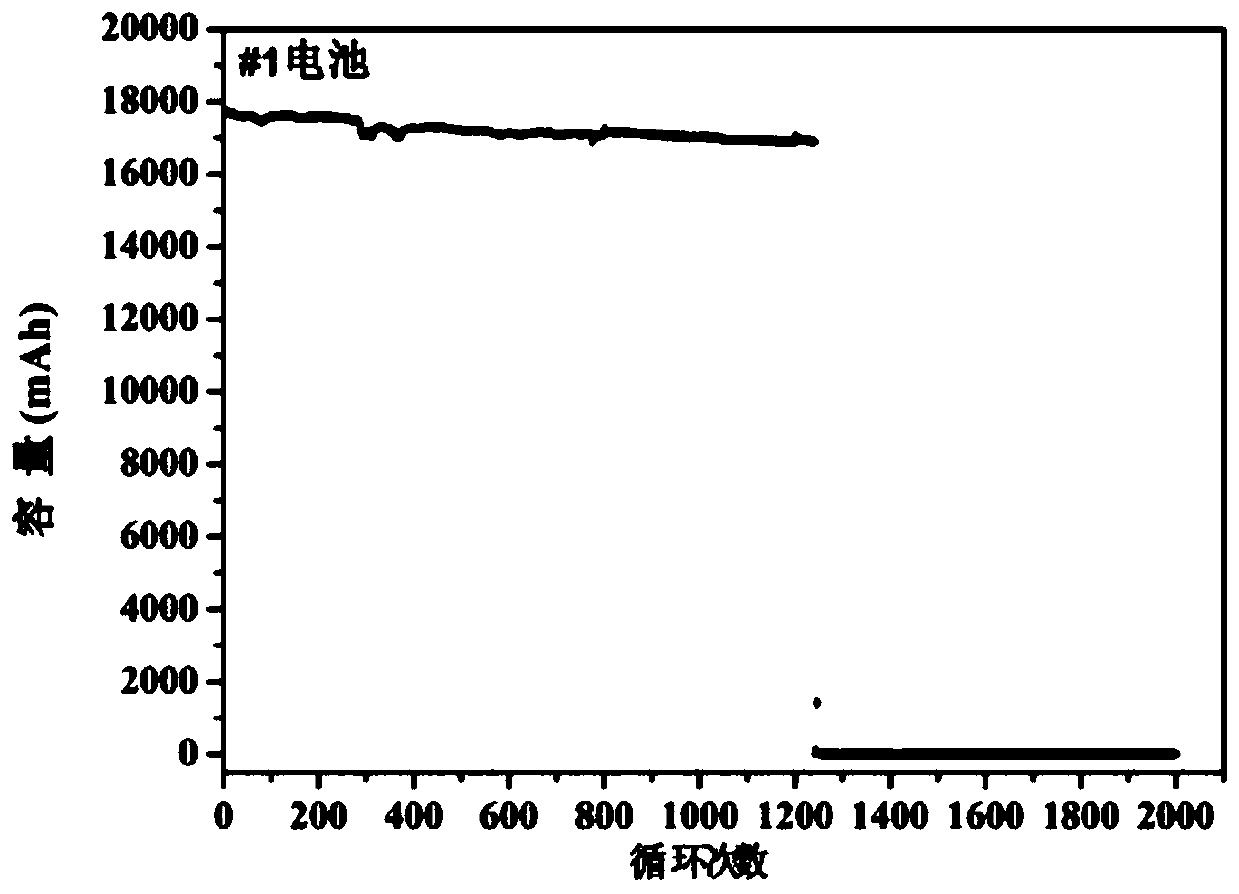Evaluation method and device for accelerated attenuation of cascade utilization lithium iron phosphate battery
A lithium iron phosphate battery and evaluation method technology, which is applied in the direction of measuring devices, measuring electricity, and measuring electrical variables, etc., can solve problems such as insufficient accuracy and reliability, and achieve the effects of accurate judgment results, simple testing equipment, and fewer testing parameters
- Summary
- Abstract
- Description
- Claims
- Application Information
AI Technical Summary
Problems solved by technology
Method used
Image
Examples
Embodiment 1
[0032] This embodiment takes 12 randomly selected retired lithium iron phosphate single batteries as the object, and provides an evaluation method for cascade utilization of lithium iron phosphate batteries to accelerate decay. The batteries are numbered 1# to 12#, and the rated capacity is 20Ah , the remaining capacity at the time of decommissioning is about 80%; the evaluation method is as follows:
[0033] (1) Perform cyclic charge and discharge on 1#~12# decommissioned lithium iron phosphate batteries. C carries out constant current charging to 3.65V and turns to constant voltage charging until the charging current drops to 0.05C. After standing for 30 minutes, discharge at a constant current of 0.5C until the voltage drops to 2.8V;
[0034] (2) During each charging process of the battery, when the voltage reaches 3.20V, 3.25V, 3.30V, 3.35V and 3.40V, calculate the voltage change of the battery in the next 2 minutes respectively, and record them as ΔU 1 , ΔU 2 , ΔU 3 , ...
Embodiment 2
[0045] This embodiment takes 12 randomly selected retired lithium iron phosphate cells as the object, and provides an evaluation method for cascade utilization of lithium iron phosphate batteries to accelerate decay. The batteries are numbered 13# to 24#, and the rated capacity is 20Ah , the remaining capacity at the time of decommissioning is about 80%; the evaluation method is as follows:
[0046] (1) Perform cyclic charge and discharge on 13#~24# decommissioned lithium batteries. The method of cyclic charge and discharge is: at room temperature (20±5℃), discharge the remaining power of the battery, let it stand for 10 minutes, and proceed at 0.2C Constant current charging to 3.55V, then constant voltage charging, until the charging current drops to 0.05C, after standing for 20 minutes, discharge at a constant current of 0.4C until the voltage drops to 2.7V;
[0047] (2) During each charging process of the battery, when the voltage reaches 3.1V, 3.13V, 3.16V, 3.19V, 3.22V, 3...
Embodiment 3
[0057] This embodiment takes 12 randomly selected decommissioned lithium iron phosphate single batteries as the object, and provides an evaluation method for cascade utilization of lithium iron phosphate batteries to accelerate decay. 80Ah, the remaining capacity is about 85% when decommissioning, the evaluation method is as follows:
[0058] (1) Perform cyclic charge and discharge on 25#~36# decommissioned lithium batteries. The method of cyclic charge and discharge is: at room temperature (20±5℃), discharge the remaining battery power, let it stand for 20 minutes, and proceed at 0.4C Constant current charging to 3.6V, then constant voltage charging until the charging current drops to 0.05C, after standing for 40 minutes, discharge at a constant current of 0.6C until the voltage drops to 2.6V;
[0059] (2) During each charging process of the battery, when the voltage reaches 3.2V, 3.25V, 3.3V, 3.35V and 3.4V, calculate the voltage change of the battery in the next 1.5 minutes...
PUM
 Login to View More
Login to View More Abstract
Description
Claims
Application Information
 Login to View More
Login to View More - R&D
- Intellectual Property
- Life Sciences
- Materials
- Tech Scout
- Unparalleled Data Quality
- Higher Quality Content
- 60% Fewer Hallucinations
Browse by: Latest US Patents, China's latest patents, Technical Efficacy Thesaurus, Application Domain, Technology Topic, Popular Technical Reports.
© 2025 PatSnap. All rights reserved.Legal|Privacy policy|Modern Slavery Act Transparency Statement|Sitemap|About US| Contact US: help@patsnap.com


